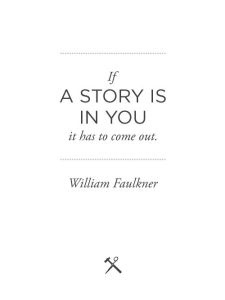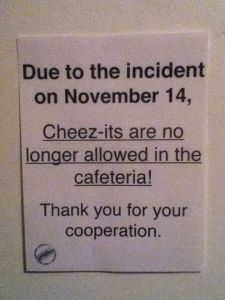Great books are filled with conflict, and great characters who learn important lessons.
Writer and all-around-funny Jenny Hansen’s clever tips for Dirty Fighting Techniques can be applied to your main character’s friend, family member or a significant other…whoever he or she is in conflict.
Hansen asserts, “Every entry on the Dirty Fighting List is guaranteed to make the other person see red.” If you’re writing fiction, anger and tension is a fantastic vehicle to move your story quickly and appropriately introduce backstory. The following are excerpts from her post.
One difficulty with reading about dialog is that every character is unique and, even though the examples may be excellent, your characters would not necessarily say those things. How do you think of creative things to say that would apply ONLY to your character?
One answer is to make him or her fight.
Since gratuitous fighting in a story is like gratuitous sex (kinda boring if there’s no real connection or reason for it), the author needs to find a great reason for the fight. The easiest way to pave the road is to discover what your characters really want. Then dig down for what they really, really want.
DON’T give it to them.
Or at least, don’t give it too soon.
Then flake away more layers to uncover what your character really fears. Then what they really, really fear. DO give it to them!
This is where things get interesting. You not only have characters who are upset, you’ve also found myriad ways to slide everybody deeper into your story. To do this, ask your character questions:
- What matters most to this character? (What is he or she most afraid to lose?)
- Who matters most? (This is usually the person they are most afraid to lose.)
- How did the character’s parents fight?
- How did the character’s parents interact with him or her?
- What does this character wish he or she had gotten in childhood?
All of these questions can provide you with cues about where your character is “broken” and give you ideas about fixing the broken part (i.e. Fix = Lesson).
Now it’s time to unleash that fight! BRING IT ON.
Below are Jenny Hansen’s top five Dirty Fighting Techniques for adding tension and plotting options to your story. (Get ready to flex your sarcasm muscle – which is always used in a dirty fight.)
#1 – Triangulating: Don’t leave the issue between you and your
conflict partner (could be a family member, friend or love interest), pull
everybody in. Quote well-known authorities who agree with you and list every family member whom you know has taken your side (and lie about the ones you haven’t spoken to, yet).
Uses: Triangulating is incredibly useful in fiction because you can expand the discussion to more characters and stir up some real drama. Let’s not keep this issue between just us, one character says to the other. Oh no, lets involve everybody.
If you have extreme Dirty Fighting Talent, you can stir the pot and then step back and play a new game called, “Let’s watch the other two people fight.” Good times.
#2 – Escalating: Quickly move from the main issue of the argument
to questioning your partner’s basic personality, and then move on to wondering whether the relationship is even worth it. Blame your partner for having a flawed personality so that a happy relationship will be impossible.
Uses: Excellent tool for keeping two love interests apart. But, the fight better be about something that really, really matters.
Escalating also allows for plausible use of Back Story. When you’re moving from the main issue to what the REAL issue is (often happens at the end of Act 2), escalating the argument will make someone lose control enough that they blurt out something juicy. Way to go, Author!
#3 – Leaving: No problem is so big or important that it can’t
be ignored or abandoned all together. Walk out of the room, leave the house, or just refuse to talk. Sometimes just threatening to leave can accomplish the same thing without all the inconvenience of following through.
Uses: My favorite use of this is employing it when the two characters really need each other. It completely ups the betrayal factor: I can’t depend on you, I don’t trust you, you’ve let me down.
You noticed how dirty those last three statements were, right? Not a clean fight to be found anywhere with “leaving,” which is fantastic for your story! The farther your character falls, the harder the journey is on the way back up, right?
#4 – Timing: Look for a time when your partner is least able
to respond or least expects an argument.
Uses: Think about this from a story point of view. A really great time to pick a fight is just before the main character embarks on a journey, has a new murder to solve, is called on to save the world. Anything
with high stakes. Be sure the character ambushing them is a likeable one so the reader REALLY gets drawn into the conflict.
#5 – Rejecting Compromise: Never back down.
Uses: This is a kickass Dirty Fighting trick to use on the main character. If there is only one winner, there is automatic conflict involved for the person who “loses.” The solutions are endless, but here’s some scenarios that come to my mind.
The main character could:
- Realize the universal truth in fighting: the person who says “no” always has the power. Perhaps your MC will change their motivation so that the other character’s “no” doesn’t bother them so much.
- Learn never to accept “no” from someone who doesn’t have the power to say “yes.” In other words, your MC could learn to stand up for they really want and find a way around their primary obstacle.
- Find a way for there to be two winners. This a continuation of the point above
What do you think? What are some other ways you could use a good fight to help your character grow or advance your story? Do you use any of the five techniques in your own life…come on, you can tell! Let’s hear your fabulous Dirty (Fighting) Thoughts!
Jenny Hansen’s creative life is filled with humor: writing memoir, women’s fiction, chick lit, and short stories. Find Jenny on Twitter @jhansenwrites, read her blog or look for her over on the Writers In The Storm blog.


 While my boys liked the mysteries and laugh-out-loud humor, I couldn’t make it through a Normal Street episode without crying. The show depicts what growing up is all about, and often the lessons are bittersweet. Sloane’s portrayal of Gortimer, and the adventures and conflicts explored by the trio of main characters, including Ranger (Drew Justice) and Mel (Ashley Boettcher), riveted us. As I chatted with the cast, I thought, “I wish my boys were here. They would FREAK.”
While my boys liked the mysteries and laugh-out-loud humor, I couldn’t make it through a Normal Street episode without crying. The show depicts what growing up is all about, and often the lessons are bittersweet. Sloane’s portrayal of Gortimer, and the adventures and conflicts explored by the trio of main characters, including Ranger (Drew Justice) and Mel (Ashley Boettcher), riveted us. As I chatted with the cast, I thought, “I wish my boys were here. They would FREAK.”
 Day 1: The writers had a mere seven seconds to scourge the Teen/YA section of Bainbridge Public library for a book. Their quest: find the seventh sentence of the seventh page, and write a story beginning with that one, random sentence. Some chose to apply the sentence to their work-in-progress. Others created fresh, new characters on the fly, crafting tense, energetic mini-stories.
Day 1: The writers had a mere seven seconds to scourge the Teen/YA section of Bainbridge Public library for a book. Their quest: find the seventh sentence of the seventh page, and write a story beginning with that one, random sentence. Some chose to apply the sentence to their work-in-progress. Others created fresh, new characters on the fly, crafting tense, energetic mini-stories.

